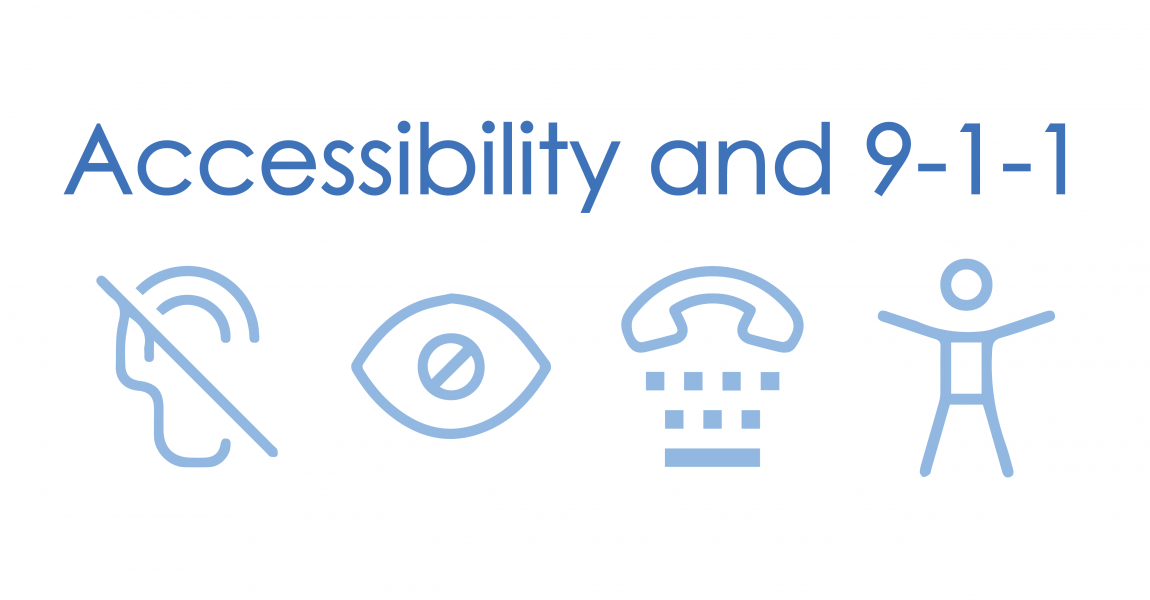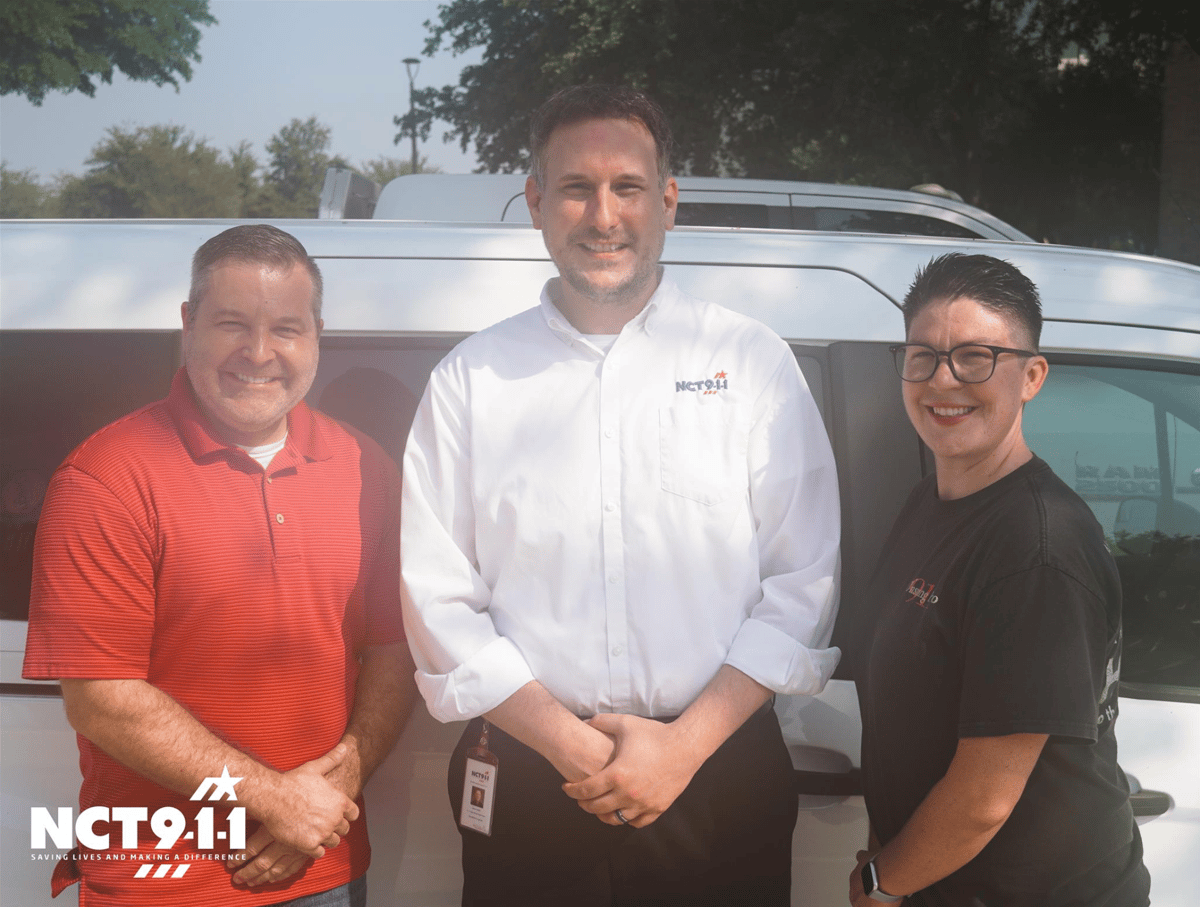Who is the North Central Texas Emergency Communications District?
The North Central Texas Emergency Communications District, or NCT9-1-1, is a 9-1-1 authority that services 13 counties and five municipalities surrounding the Dallas/Fort Worth Metroplex. But that’s just our official definition. We like to think that NCT9-1-1 is really defined by our people.
The district is made up of six different teams who are the backbone of the 9-1-1 program. These individuals work to provide superior services for the public and communities we serve, and we have a great time doing it. We’ve summarized our teams and their members below; take a look to discover the ins and outs of how a regional emergency communications district is run.
The Data Team
The 9-1-1 Data Team is responsible for the ALI Database. The ALI Database is a critical component of the 9-1-1 system and is the source for landline address information. The 9-1-1 Data Team manages approximately 400,000 customer records with an average error rate of 0.001. This low number of errors is achieved through the hard work of the local city and county addressing coordinators. Their efforts keep this database up to date. With the growth of the NCT9-1-1 program area, this is a constant work in progress. Each city and county is doing a great job at maintaining the data along in partnership with NCT9-1-1 staff.
Team Members:
LeAnna Russell, ENP, 9-1-1 Database Manager
Melissa Tutton, ENP, 9-1-1 Database Analyst II
The Geographic Information Systems (GIS) Team
The GIS Team has the primary role of ensuring accurate and precise GIS data is used throughout the NCT9-1-1 Public Safety GIS environment. The GIS Team assists the 9-1-1 Addressing Authorities from the NCT9-1-1 member agencies in the aggregation and quality control of GIS data. The GIS Team is tasked with provisioning high-quality spatial data into the public safety applications. These mission-critical applications are used to geospatially route live 9-1-1 calls, and plot emergency calls on the dispatch mapping platform at the PSAPs.
Team Members:
Rodger Mann, 9-1-1 GIS Manager
David Dean, 9-1-1 GIS Project Coordinator
Kasey Cox, 9-1-1 GIS Data Administrator
Bruno Blanco, 9-1-1 GIS Specialist III
Joe Brawner, 9-1-1 GIS Specialist III
Danette Bradshaw, 9-1-1 GIS Specialist III
David Lindsey, 9-1-1 GIS Applications Developer
The Operations Team
The 9-1-1 Operations Team strives for quality communications and support of the PSAPs throughout the region. The team’s goal is to serve as an advocate and liaison for the PSAPs with NCT9-1-1.
The 9-1-1 Operations Team focuses on providing value in three main areas:
Training – Offer specialized courses that meet the Texas Commission on Law Enforcement (TCOLE) telecommunicator licensing requirements, as well as continuing education hours and Basic, Intermediate, Advanced, and Master’s certifications.
Quality Assurance – Serve as a liaison between the PSAPs and NCT9-1-1, conducting quarterly site visits to ensure compliance with regional, state, and national requirements.
Communications – Keep necessary stakeholders updated with the achievements of NCT9-1-1 through marketing, visual media graphics, and public relations; provide public education throughout the region with the distribution of educational materials.
Team Members:
Jason Smith, ENP, 9-1-1 Operations Supervisor
Brittney Burross, ENP, 9-1-1 Quality Assurance Coordinator
Amelia Mueller, 9-1-1 Communications Coordinator
Bret Batchelor, 9-1-1 Training Coordinator
Kristin McKinney, 9-1-1 Visual Media Coordinator
The Technology Team
The 9-1-1 Technology Team provides technical expertise in the selection, development, implementation, maintenance, and usage of all NCT9-1-1 hardware, software, telecommunication networks, GIS, and other essential systems to advance NG9-1-1 within the NCT9-1-1 region.
The team maintains and monitors the 9-1-1 Emergency Service IP network (ESINET) and all 9-1-1 PSAP equipment with regular preventative maintenance. The team is also responsible for the interconnection of the NCT9-1-1 Regional 9-1-1 ESINET with other 9-1-1 authorities and service providers as well as the state and national ESINETs as they become available.
Team Members:
Clay Dilday, 9-1-1 Technology Manager
Tommy Tran, 9-1-1 Solutions Architect
Steven Gorena, 9-1-1 Field Support Supervisor
Jeremy Crabtree, 9-1-1 Systems Administrator II
Christopher Woodruff, 9-1-1 Systems Administrator
Aaron Lloyd, 9-1-1 Technology Specialist IV
Robert Darnell, 9-1-1 Technology Specialist IV
Ramya Cruz, 9-1-1 Network Engineer
Myka Artis, 9-1-1 Network Engineer
The Strategic Services Team
The Strategic Services Team is responsible for various business functions on behalf of the NCT9-1-1 program. This includes supporting the director and the Board of Managers as needed; coordinating the strategic planning and budgeting processes; serving as liaison with various internal groups including legal, human resources, and accounting/purchasing; coordinating with various vendors; coordinating the NCT9-1-1 fleet; and providing project management support as needed.
In addition, the Strategic Services Team is tasked with administering a suite of productivity applications that increase cross-team collaboration, improve processes, and ensure the program remains in compliance with various mandates and standards.
Team Members:
Jessie Shadowens-James, 9-1-1 Strategic Services Manager
The Support Team
The Support Team oversees support-related activities for the NCT9-1-1 Program, director, and Board of Manager’s support as needed. Additional duties include staff onboarding/offboarding, travel, meeting/event coordination, facilities, office supplies, office equipment inventory, Pcards, purchasing, and staff training and development.
Team Members:
Hilaria Perez, 9-1-1 Admin Program Coordinator
Kari Gamez, 9-1-1 Senior Administrative Assistant




